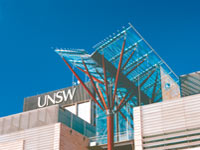 |
|
 |
| |
| |
| |
| |
| |
| |
| |
Campus: Kensington Campus
| |
| |
Career: Undergraduate
| |
| |
Units of Credit: 6
| |
| |
| |
| |
Contact Hours per Week: 4
| |
| |
Enrolment Requirements:
| |
| |
Prereq: ELEC3106
| |
| |
| |
| |
| |
 |
|
 |
Description
Review of transceiver architectures. RF basics: review of Smith charts, S-parameters and RF active/passive devices. Impedance matching, noise and distortion, practical implementation issues and parasitics,. RF filters: image parameter method, insertion loss method, scaling and transformation, stepped-impedance low pass filters, coupled line filters, filters using coupled resonators, simulation issues. LNA: circuit architectures, noise performance parameters, linearity, impedance matching, bandwidth, bipolar/MOS LNAs, power consumption. Mixers: active/passive mixer architectures; performance parameters - noise, isolation, linearity, conversion gain; performance optimisation; bandwidth; power consumption. Oscillators: oscillator types and architecture; voltage controlled oscillators and tunablity; phase noise; power consumption; resonators. Phase locked loops: types of PLL; analysis and dynamics of PLL; charge pump PLL; PLL noise; frequency synthesis. Power amplifiers: categories of PA; analysis of class C,E,F PA; efficiency; output power., linearization techniques; impedance matching. MICs: hybrid MICs and MMICs.
|

